-
About Us
Canal Boatmen Family History
Boatmen in the news
Newspapers -Staffordshire
More from Staffordshire
Newspapers - Warwickshire
Newspapers - Birmingham
Newspapers - Leicestershire
Newspapers - Derbyshire
Newspapers - Nottingham
Newspapers - Cheshire
More from Cheshire
Newspapers - Northants
Newspapers - Lancashire
Newspapers - Manchester
Newspapers - Liverpool
Newspapers - Yorkshire
Newspapers - Worcestershire
Newspapers - Gloucestershire
Newspapers - Shropshire
Newspapers - Oxfordshire
Newspapers - Wales
Newspapers - Essex
Newspapers - Kent
Newspapers - London
Censuses
Parish register extracts
Other useful stuff
Contacts, names and photos
Contact
Links
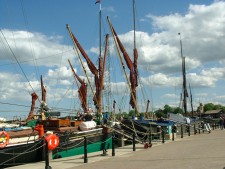
The first of the three documents here covers only two years, 1889 and 1899. In 1889 there were two major strikes in the area, the first in September, in Grays and Tilbury, when the Dockers and the cement workers came out for a rise in pay, the second in November, a lockout at Eastwood's Brick Fields in Shoeburyness.
The men at Brooks's Cement Works in Grays settled their claim very quickly. The decision was made that of the 3s rise in pay they would receive, they would donate 2s 6d to the strike fund to support the men who had not yet settled.
The picture is of Thames Sailing Barges at Maldon.
The women of Grays feature in this selection from 1900 to 1904.
A court case featuring Martha Franey and Henrietta Childs whereby John Franey, Martha's husband, was trying to avoid paying maintenance on the grounds of Martha's adultery, was complicated by the fact that John Franey was living with Henrietta Childs. After the case, "a royal row was engaged in for the whole length of High Street as far as the railway station, where the parties engaged in a free fight".
Emily Page, the wife of a bargeman, appears in two assault cases, the first in February 1900 when she accused the landlord of the White Hart, William Isaac Frost, of forcibly removing her from the pub. Mr Frost said that she had been banned from the pub for dancing, pulling her dress up above her knees, and "throwing her legs in the air". In the second case, the defendant was Leonard Blackman, when a general free for all seems to have broken out. Mrs Page gave as good as she got, and another of the protagonists, Emma James, said that Mrs Page had "pulled her clothes up and tried to bite a piece out of her thigh".
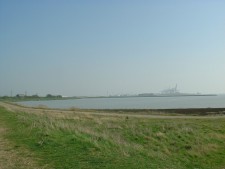
An article from July 1904 detailing a survey of the sanitary state of Rainham is, frankly, cringeworthy! The description of the factory where rotting fish was turned into fertiliser is particularly graphic.
The picture is of Mucking Creek and Stanford Wharf.
The attached document gives some idea of the information which can be gleaned from the Lightermen and Watermen Apprentice Bindings, which are available either through Find My Past or, in CD form, from the Parish Register website (See Links page).
The information is for the Tyler family, some of whom lived or worked in Grays Thurrock.
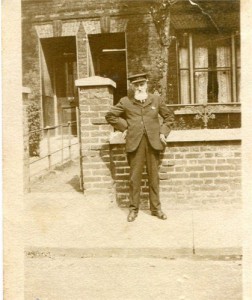
On March 3 1934, the Thurrock Gazette newspaper interviewed William Bannister, a Thames Lighterman who had lived in Grays Thurrock all his life. The article gives his reminiscences about Thames Sailing Barge matches (including the barge Gazelle, which won a number of them), as well as his childhood memories of the town of Grays.
With thanks to Ross Bannister, who sent me the article. The picture is of William Bannister outside his house in Exmouth Road, Grays.
Extracts from the Parish Registers of Grays (and the odd other parishes!), featuring Watermen, Lightermen and Bargemen.
With thanks to Dave Male for providing me with the source material.
Extracts from the Grays Marriage Registers 1839 to 1893 (82kb)
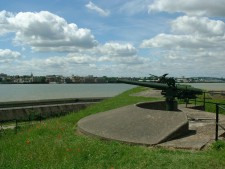
It is now possible to walk along the Thames Estuary on the Essex side all the way from Tilbury to Hadleigh via Stanford-le-Hope, Fobbing, Linford, Benfleet and Leigh on the Thames Estuary Path.
Please be patient with the map - it takes a little while to load!
The picture is a view across the river from Tilbury Fort.
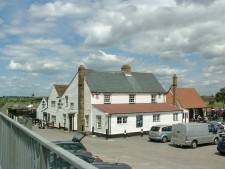
Whilst this is quite a long distance - around 27 miles I believe - there are many shorter walks within it that are well worth the effort. One such is the "Two Forts Walk" between Tilbury Fort and Coalhouse Fort, about three miles each way. The map assumes that walkers will be travelling by train, but there are parking places along the route. For the "Two Forts Walk", parking is available at Tilbury Fort, and the easiest access to the river wall is from the back of the Halfway House pub.
